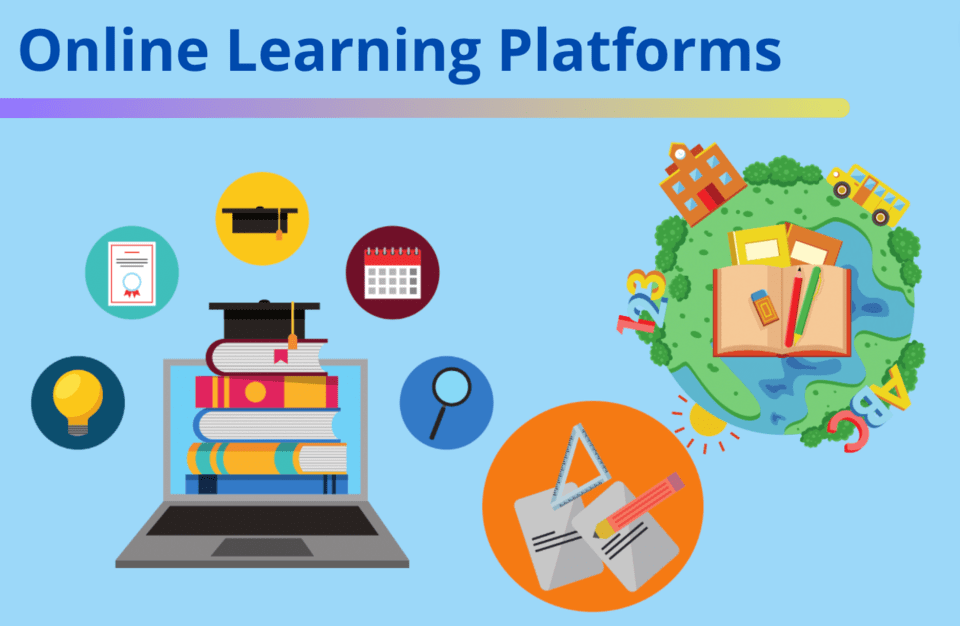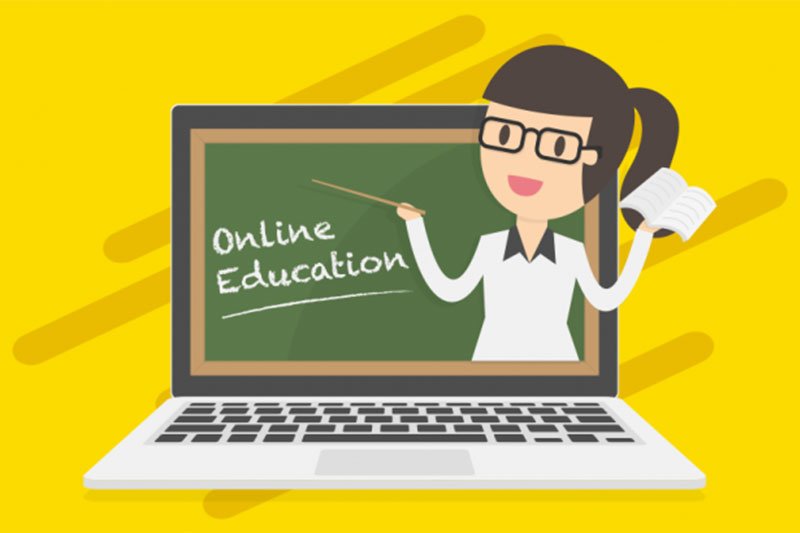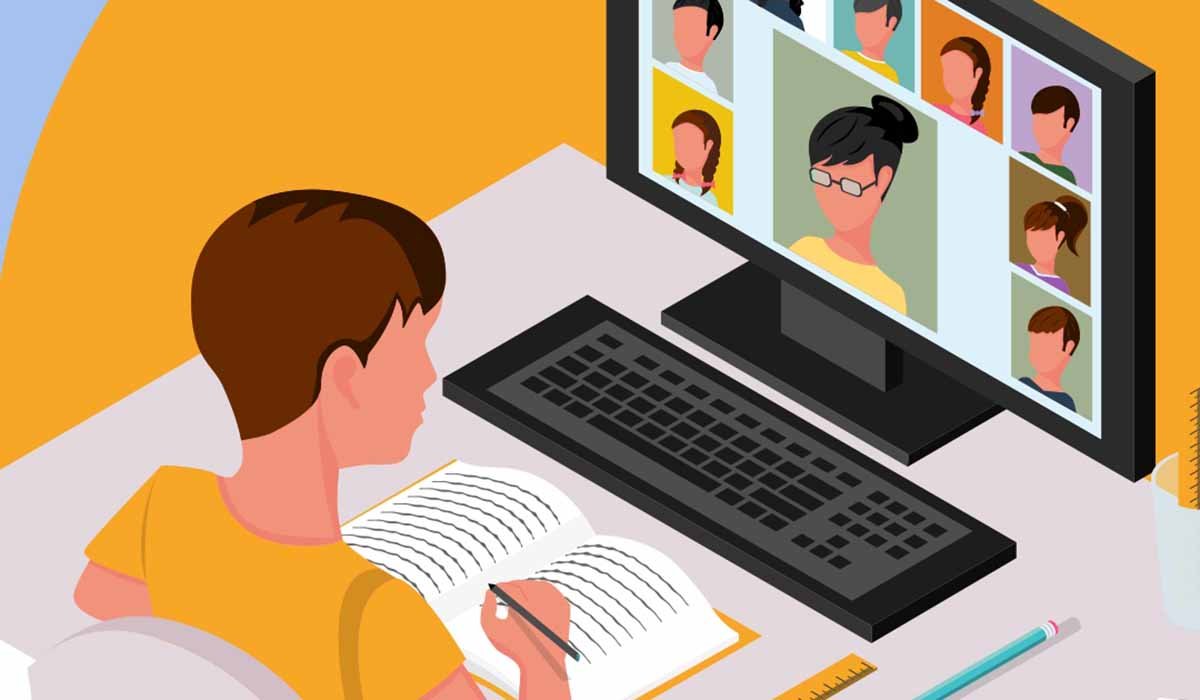The rise of online learning platforms has revolutionized the education system, offering flexibility and access to a wide range of learning resources. As the world moves towards more digital and flexible education models, these platforms have been able to cater to the varying needs of learners, including different learning styles. Learning styles refer to the ways in which individuals prefer to acquire, process, and retain information. These styles often vary from person to person, with some students excelling in visual learning, others in auditory learning, and others still in kinesthetic or tactile learning.
In traditional classrooms, teachers often use one-size-fits-all methods, which can make it difficult to reach every student effectively. However, online learning platforms have the advantage of offering diverse tools, resources, and formats, enabling students to engage with content in ways that best suit their learning preferences. This article explores how online learning platforms cater to diverse learning styles, ensuring that all students, regardless of their preferred learning methods, can thrive in the digital education landscape.
Key Takeaways
- Diverse Content Formats: Online platforms offer a variety of content formats, including videos, audio files, interactive simulations, and text-based resources, to cater to different learning styles.
- Interactive Learning Tools: Platforms increasingly use interactive tools like simulations, quizzes, and gamification to engage kinesthetic learners and enhance retention.
- Personalized Learning Paths: Adaptive technologies enable online platforms to provide personalized learning paths, ensuring content delivery matches the learner’s style and pace.
- Support for Multimodal Learners: Multimodal learners benefit from platforms that integrate diverse content types, allowing them to engage with materials in various ways to reinforce their understanding.
- Assistive Technologies for Accessibility: Many platforms are incorporating assistive technologies such as screen readers, text-to-speech features, and captioning to support learners with disabilities.
Understanding Learning Styles

Before delving into how online platforms can cater to different learning styles, it is important to understand the main types of learning styles:
- Visual Learners: Visual learners prefer to see and observe things. They excel when information is presented in a visual format, such as through charts, graphs, diagrams, infographics, and videos.
- Auditory Learners: Auditory learners absorb information best when they hear it. They tend to excel in environments where information is delivered through lectures, podcasts, discussions, or audio clips.
- Kinesthetic Learners: Kinesthetic learners are hands-on learners who prefer physical movement and tactile experiences. They learn best when engaging in activities that allow them to touch, manipulate, or physically interact with materials.
- Reading/Writing Learners: These learners thrive on written words. They are best suited for environments where they can read text-based content such as articles, books, and written instructions and also benefit from writing notes or essays to reinforce their learning.
- Multimodal Learners: These learners have a combination of preferred learning styles. They can adapt to different learning methods depending on the content, but they tend to retain information best when engaging with multiple types of materials.
How Online Learning Platforms Cater to Diverse Learning Styles
Online learning platforms have evolved significantly in recent years to accommodate the diverse needs of learners. They offer multiple features, tools, and content formats that cater to various learning preferences. Here’s how they meet the needs of different learning styles:
1. Visual Learners
Visual learners benefit greatly from the visual elements integrated into online learning platforms. These learners engage best when content is presented in clear, well-organized visual formats.
- Video Lectures: Many online learning platforms include video content, which allows visual learners to see concepts in action. Visual learners can watch demonstrations, animations, and simulations, which helps them retain information more effectively.
- Infographics and Diagrams: Platforms often incorporate infographics, charts, and diagrams to break down complex ideas. These visuals make it easier for visual learners to understand and remember key concepts.
- Interactive Tools: Many online platforms offer interactive elements such as digital whiteboards, virtual labs, or drag-and-drop activities, which allow learners to visualize processes and outcomes in real time.
- Text and Image Combinations: Visual learners often benefit from a combination of text and images, as they can connect information with visual cues. Course modules are frequently designed to integrate these two formats, enhancing comprehension.
2. Auditory Learners
Auditory learners excel in environments where they can listen to information. Online learning platforms have incorporated various auditory elements to support these learners.
- Podcasts and Audio Files: Many online courses feature podcasts or downloadable audio files of lessons, lectures, or supplementary materials. This allows auditory learners to listen to content while multitasking or when they are on the move.
- Narrated Slideshows: Some platforms include narrated PowerPoint presentations or interactive slideshows, which combine both audio and visual content, making learning more accessible to auditory learners.
- Discussion Forums and Webinars: Auditory learners often thrive in interactive environments where they can listen to peers and instructors. Many platforms offer discussion forums, webinars, or live chat options, enabling auditory learners to engage with others through conversation.
- Voice Assistants and Speech-to-Text Tools: Certain platforms integrate voice assistants or speech-to-text capabilities, allowing learners to interact with the platform using their voice. This provides a more auditory-focused learning experience.
3. Kinesthetic Learners
Kinesthetic learners need to engage with content actively and physically to fully comprehend it. Although online learning typically lacks the physical interaction found in traditional classrooms, many platforms are incorporating strategies to cater to kinesthetic learners.
- Interactive Simulations and Virtual Labs: Some online platforms provide simulations and virtual labs, which replicate real-world environments and allow learners to interact with content through hands-on activities. This can range from science experiments to engineering design projects.
- Gamification: Gamified learning experiences are increasingly common in online learning platforms. These experiences allow learners to complete tasks or challenges through interactive games, quizzes, or competitions. This hands-on approach keeps kinesthetic learners engaged and motivated.
- Augmented Reality (AR) and Virtual Reality (VR): Some online learning platforms are integrating AR and VR to create immersive learning experiences. Through VR, learners can interact with content in a 3D environment, which mimics real-world learning activities and engages their sense of touch and movement.
- Physical Activity Integration: Certain platforms encourage kinesthetic learners by integrating physical activity with learning. For example, students may be asked to conduct experiments, build models, or participate in physical challenges that are related to their coursework.
4. Reading/Writing Learners

Reading/writing learners tend to excel in environments that provide textual content and opportunities for them to write and read to absorb information. Online learning platforms cater to this style through various text-based tools and activities.
- Text-Based Resources: Most online learning platforms provide extensive text-based content, such as articles, eBooks, research papers, and tutorials. These resources are especially beneficial for reading/writing learners who thrive on written content.
- Written Assignments and Reflections: Platforms often encourage students to write essays, research papers, or reflections to demonstrate their understanding of the material. This allows learners to process and reinforce what they have learned through writing.
- Discussion Boards and Journals: Reading/writing learners can also engage with discussion boards and journaling activities, which give them a space to articulate their thoughts in writing. This is especially useful for those who benefit from synthesizing information through writing.
- Comprehensive Notes and Text Transcripts: Many online courses provide detailed written notes, transcripts of video lectures, and study guides. Reading/writing learners can use these materials to review and reinforce their understanding of key concepts.
5. Multimodal Learners
Multimodal learners benefit from the integration of different types of content. Since they can adapt to various learning methods, online learning platforms are well-suited to their needs by offering a combination of visual, auditory, and kinesthetic resources.
- Flexible Content Delivery: Online platforms often offer a mix of video lectures, written materials, quizzes, interactive simulations, and audio resources. This variety allows multimodal learners to engage with the content in multiple ways, ensuring they absorb information in the most effective manner.
- Personalized Learning Paths: Some platforms use artificial intelligence to create personalized learning paths, guiding multimodal learners through a series of lessons and resources based on their preferences and performance. This ensures that learners can engage with content in a way that matches their strengths.
- Adaptive Learning Technologies: Many online platforms incorporate adaptive learning technologies, which adjust the pace, difficulty, and content delivery methods based on the learner’s progress. This customization ensures that multimodal learners receive the right balance of content types.
Customizing Learning Experiences for Individual Needs
The key to effectively catering to diverse learning styles lies in customization. Traditional classrooms often employ one teaching method that does not take into account the individual needs of each student. Online learning platforms, however, can personalize learning experiences in a way that is often impossible in face-to-face education.
1. Personalized Content Recommendations
One of the most advanced features of modern online learning platforms is their ability to recommend tailored content based on a learner’s progress. For example, if a student demonstrates an affinity for visual learning, the platform might prioritize video lectures, infographics, or visual problem-solving tools. Conversely, auditory learners may receive more audio-based content, such as podcasts or voice-activated lectures. This form of customization helps ensure that students are receiving content in the form that best suits their learning preferences.
2. Adaptive Learning Technologies
Adaptive learning technologies, powered by artificial intelligence (AI), play a vital role in helping online learning platforms provide personalized learning experiences. These technologies adjust the difficulty level, pace, and format of lessons based on how well a student is performing. For example, if a student struggles with a particular topic, the system may present additional resources such as videos, quizzes, or supplementary readings. If the student is excelling, it might speed up the course material and challenge the student with more complex problems. This ensures that each learner progresses at their own pace and is constantly engaged, regardless of their preferred learning style.
3. Learning Analytics and Insights
Many online platforms offer detailed analytics that track students’ performance, engagement, and progress over time. These analytics help both learners and educators understand how well the student is performing and which areas they may need to improve upon. For learners, these insights can guide them towards the type of content that works best for them. For example, if a student is consistently struggling with written text but excelling in video-based material, they can adjust their study habits to focus more on visual content. Educators, on the other hand, can use this data to identify trends across their student population and adjust their teaching methods to meet the collective needs of their learners.
Interactive and Engaging Features
Engagement is a critical component of effective learning, and online learning platforms are constantly innovating ways to maintain student interest and motivation. For diverse learners, engagement is essential in ensuring that the material remains accessible and interesting.
1. Gamification
As mentioned earlier, gamification is a popular feature of online learning platforms. This strategy uses game elements such as points, badges, and leaderboards to motivate students. Kinesthetic learners, in particular, benefit from gamified learning experiences, as these environments require them to interact physically and strategically with the content. For example, some online learning platforms include interactive games that encourage students to apply concepts in real-world scenarios, such as solving math problems or designing a website. Gamification encourages competition, but it also fosters collaboration and teamwork through group challenges, making it a multifaceted tool for engagement.
2. Virtual Reality (VR) and Augmented Reality (AR)

For kinesthetic learners and others who benefit from physical engagement, VR and AR represent the cutting edge of online education. These technologies offer immersive, interactive experiences where students can engage with content in a 3D space. For instance, a medical student can perform virtual surgeries, while a geography student might explore the geography of a foreign country in detail. Virtual simulations and immersive activities in fields such as engineering, healthcare, and the arts offer students the ability to gain practical, hands-on experience without leaving their home. The integration of VR/AR into online platforms allows students to learn by doing, making it an essential tool for kinesthetic learners.
3. Live Classes and Webinars
For auditory learners, synchronous learning options such as live classes, webinars, and real-time discussions are particularly beneficial. Live classes facilitate a direct, real-time exchange of information, giving auditory learners the opportunity to ask questions, participate in discussions, and receive instant feedback. These live interactions can be further enhanced by having recorded versions of the classes available for students to revisit. This ensures that auditory learners can continue to engage with the material at their own pace and revisit the audio content whenever necessary.
4. Collaborative Learning Tools
Collaborative tools such as discussion boards, group projects, and peer assessments encourage students to work together, share ideas, and exchange knowledge. These tools benefit all learning styles by offering opportunities for students to engage in critical thinking and problem-solving with their peers. Visual learners can share diagrams and graphics, auditory learners can participate in group discussions, and kinesthetic learners can contribute by experimenting with physical materials or engaging in hands-on group activities. Collaborative tools foster a sense of community among learners and help them stay motivated by providing a social element to the online learning experience.
Providing Accessibility for All
Another critical factor in making online learning accessible to diverse learners is ensuring that the platform itself is accessible. Online learning platforms must incorporate accessibility features to ensure that students with disabilities or special learning needs can also participate and benefit from the learning experience.
1. Closed Captioning and Subtitles
For students with hearing impairments, closed captioning and subtitles are essential features. Many online platforms now offer automatic captioning for video lectures, or they provide options for students to manually toggle subtitles on and off. This feature not only helps students with hearing disabilities but also benefits auditory learners who prefer to read along with the audio content.
2. Text-to-Speech Tools
Text-to-speech tools help students with visual impairments or learning disabilities, such as dyslexia, by allowing them to listen to written content. This feature can be activated on most learning platforms to read aloud articles, quizzes, assignments, and other text-based materials. Students can adjust the speed, tone, and volume of the voice to suit their preferences, enhancing the learning experience for those who may struggle with reading.
3. Customizable Font and Display Options
Some students may have difficulty reading small fonts or low-contrast text. Online learning platforms often offer customizable display settings, allowing users to adjust the font size, style, and color contrast. This small adjustment can make a significant difference for students with visual impairments or learning disabilities such as dyslexia.
4. Keyboard Navigation and Screen Readers

Many online platforms are designed with accessibility in mind by offering keyboard shortcuts and compatibility with screen readers. Students who have mobility impairments or difficulties using a mouse can navigate the platform more easily with keyboard commands. Additionally, screen readers can read aloud the content displayed on the screen, enabling students with visual impairments to engage with written material.
Also Read: How Can Online Learning Be Made More Accessible To Diverse Learners?
Conclusion
Online learning platforms have evolved significantly to cater to a wide variety of learning styles. Whether a student is a visual, auditory, kinesthetic, or reading/writing learner, there are ample resources and tools available to help them succeed in a digital learning environment. By offering video content, podcasts, interactive tools, written resources, and personalized learning paths, these platforms ensure that all learners can engage with the material in a way that suits their individual needs. As technology continues to advance, we can expect online learning platforms to further enhance their ability to provide personalized, effective education to learners worldwide.
FAQs
What are the main learning styles?
The main learning styles are visual, auditory, kinesthetic, reading/writing, and multimodal.
Can online platforms fully accommodate kinesthetic learners?
While online platforms have historically been limited in accommodating kinesthetic learners, the integration of gamification, interactive simulations, and VR/AR is making it easier for these learners to engage physically with content.
Are there any learning platforms specifically designed for auditory learners?
Yes, many platforms offer podcasts, audio lectures, and interactive voice features that are tailored to auditory learners.
How do visual learners benefit from online learning platforms?
Visual learners benefit from online platforms that provide video lectures, diagrams, charts, and interactive visual tools to represent complex concepts.
How can multimodal learners benefit from online learning?
Multimodal learners benefit from platforms that provide a combination of video, audio, interactive tools, and written content, allowing them to engage with material in a way that matches their diverse learning preferences.
Do online learning platforms offer personalized learning paths?
Many platforms incorporate adaptive learning technologies that offer personalized learning paths, adjusting content and assessments based on the learner’s progress.
Are there online tools for students with learning disabilities?
Yes, many online learning platforms integrate assistive technologies like screen readers, closed captioning, and speech-to-text tools to support learners with disabilities.




